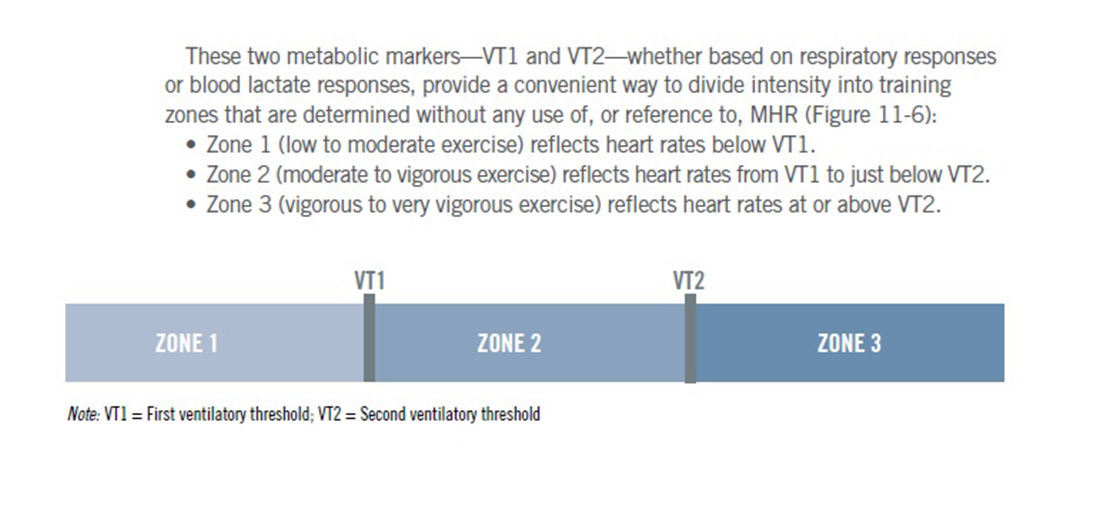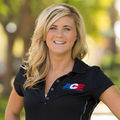The Cardiorespiratory component of the ACE Integrated Fitness Training (ACE IFTTM) Model provides a layout for individualized cardiorespiratory programming. It allows for long-term progression for clients of all fitness levels, from the sedentary to the competitive athlete. Based on your client’s goals, programming should include frequency, intensity, and type of training. There are a number of ways to monitor intensity during cardiorespiratory training. A reasonably accurate method is to use the first and second ventilatory thresholds (i.e., VT1 and VT2, respectively) as metabolic markers to gauge intensity.
ACE IFT MODEL CARDIORESPIRATORY PHASES
- Phase 1: Aerobic base training
- Phase 2: Aerobic efficiency training
- Phase 3: Anaerobic endurance training
- Phase 4: Anaerobic power training
Remember these concepts when programming using the phases of the Cardiorespiratory component of the ACE IFT Model:
- Categorize clients based on their health, fitness, and goals.
- Assessments can aid in individualizing programs for clients.
- Programming in each phase is based on the three-zone training model, which involves determining a client’s heart rate (HR) at VT1 and VT2.
- Other various intensity markers (e.g., VO2max and RPE) may also be used in the ACE IFT Model.
- Using HR at VT1 and VT2 to assess intensity provides more accuracy in individualized programming versus calculating a client’s HR training range via a mathematical model, such as a maximum HR prediction equation (e.g., 220 — age).
Much like the functional movement and resistance training component of the model, not all clients will begin in Phase 1. Where a client begins will depend on his or her specific cardiorespiratory goals and current health and cardiorespiratory fitness.
PHASE 1: AEROBIC-BASE TRAINING
The objective for clients beginning in this phase is to develop a stable aerobic base. For sedentary and less-active individuals, this means improving overall health and engaging in regular, low- to moderate-intensity activity for a moderate duration (approximately 20-30 minutes). There may be no marked improvement of VO2max, as most of the training is done in zone 1 (below VT1), although improvements in overall health will be noted.
Important considerations for phase 1 training:

- No assessments are necessary in this Phase, as there is no need to focus attention on a lack of cardiorespiratory fitness, especially for sedentary client.
- Cardiorespiratory exercise falls in zone 1, below VT1 threshold.
- Upper-limit intensity is marked by the ability to speak comfortably.
- Exercise duration can start with as few as 10 to 15 minutes, two to three times per week. Clients will not usually stay in phase 1 for long (maybe one to two weeks or up to six months) before increasing the duration of their exercise sessions. This will depend on how sedentary the client was when he or she began phase 1 training.
- Progress to 30 minutes of continuous moderate exercise as tolerated by client, at least five times per week.
- Increase duration by no more than 10 percent from week to week, until the client can perform 30 minutes of continuous exercise.
- The focus is on creating positive exercise experiences to promote regular exercise.
When programming for a client’s cardiorespiratory fitness, guidelines for progression will be subjective, based on how quickly physiological adaptations are achieved. You may be able to progress some clients more rapidly than others. Once your client has achieved and can regularly maintain continuous steady-state activity, adaptation of the aerobic base will be complete. Once your client has achieved success in phase 1, a submaximal talk-test to determine HR at VT1 can be administered just prior to progressing to phase 2.




 by
by 







 by
by